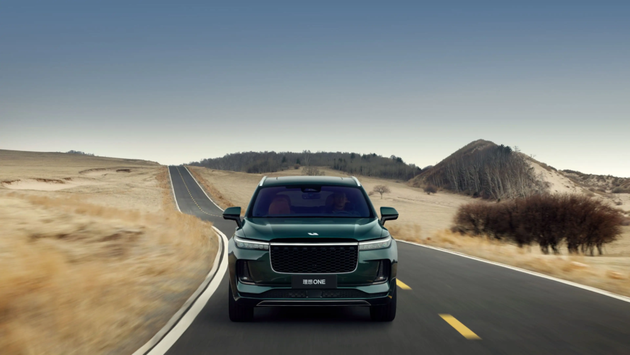Author | Yungo
Affected by the subsidy decline of new energy vehicles and the Spring Festival, sales of some car companies fell by more than 60% in January 2023. This result is both reasonable and unexpected.
Overall, according to data from the China Passenger Car Association, from January 1st to 27th, the retail volume of new energy passenger cars was 304,000, a year-on-year decrease of 1% and a month-on-month decrease of 43%; the wholesale volume of new energy passenger car manufacturers was 299,000, a year-on-year decrease of 18% and a month-on-month decrease of 50%.
Specifically, according to the January sales figures released by several new energy vehicle companies, BYD’s delivery volume in January was 151,341, a MoM decline of 36%. Ideal Auto’s January sales were 15,141, ranking first among “new forces in the auto industry”, with a MoM decline of 28%. LingPao’s deliveries dropped by more than 80%, delivering only 1,139, while XPeng Auto followed closely, with a YoY decline approaching 60%.
On one hand, the sales of new energy vehicles have come to a comprehensive stagnation, and on the other hand, at the beginning of the year, car companies headed by Tesla have announced price reductions, further intensifying the “internal competition”.
It can be said that after the new energy subsidy policy is repealed in 2023, the growth of new energy vehicle sales will be a severe problem, and car companies may face a new round of elimination.
Comprehensive Stagnation of Sales
According to the data released so far, the top three new energy vehicle companies in terms of sales are BYD, Ideal Auto, and EAon.
In 2022, BYD won the crown of the world’s new energy vehicle market sales champion with a total sales volume of 1.863 million. Huatai Securities believes that BYD’s market share is expected to continue to rise in 2023. “With the release of new models such as the high-end MPV Tangshi and Seal, and the launch of the brand in the second half of 2022, the high-end layout will gradually improve. Coupled with the increase in overseas sales, the market share is expected to continue to rise. ” Among them, BYD’s January sales were 151,341, a MoM decline of 36%. This was BYD’s first decline after breaking 200,000 sales for several consecutive months.In January, Ideals cars delivered a total of 15,141 units, a year-on-year increase of 23.4%. As of January 31, 2023, Ideals cars have delivered a total of 272,475 units.
Previously, Ideals cars had made up for the lack of endurance of new energy vehicles by using their range extender technology. Currently, they have also made a name for themselves in luxury and high-end markets with differentiated positioning. In terms of products, in addition to the current L9 and L8 models, the Ideals L7 is expected to be officially released on February 8. This is expected to contribute to the overall sales of Ideals cars and take them to new heights.
EAUTO sold 10,206 units in January, a year-on-year decrease of 36.34%, which is the first time its sales have declined after several consecutive months of exceeding 20,000 units. Although the decline is significant, it is still in the leading new energy brand lineup.
Following EAUTO was NIO, which delivered 8,506 new cars in January, a year-on-year decrease of 11.87%. In the industry’s view, one of the factors affecting NIO’s sales in January was that the ES8 upgrade had not yet begun to deliver and the ES6 was also about to undergo an upgrade.
As for other new energy brands, NEXEVT delivered a total of 6,016 units in January, a year-on-year decrease of 45.4%; Xpeng delivered a total of 5,218 units in January, a year-on-year decrease of 58.62%; JAC delivered a total of 3,116 units in January, a year-on-year decrease of 11.73%; Voyah delivered a total of 1,548 units in January, a year-on-year decrease of 0.32%; Zero Run delivered a total of 1139 units in January, a year-on-year decrease of 85.91%. Especially, Zero Run cars had the largest decline among new energy vehicle brands in January, and can be described as “cutting off at the ankle”.
Price War Fully Started
The Spring Festival period has always been a low season for car sales, and coupled with major new energy vehicle companies concentrating on clearing inventory before subsidy decline, many orders for 2023 were advanced. Therefore, to some extent, the slowdown in the new energy market in January this year is understandable.
However, this does not mean that the “insularity” of the 2023 new energy vehicle market will not intensify. To put it simply, taking Tesla’s recent price reduction behavior as an example, the intensity of the competition in the new energy market this year may far exceed that of previous years.On January 6th, Tesla officially announced that the prices of all domestically-made Model 3 and Model Y models on sale will be adjusted. The starting price of Model 3 will be reduced by RMB 36,000, and the starting price of Model Y will be reduced by RMB 29,000. The remaining versions will be reduced by varying degrees from RMB 20,000 to RMB 48,000, setting a new record for the lowest price of a Tesla in China.
In fact, as early as October 2022, Tesla had already started lowering prices in China. Tesla’s price war has quickly attracted previously hesitant customers and boosted sales. Musk revealed during Tesla’s Q4 2022 earnings call that after implementing price reductions globally, Tesla received orders twice as much as its output.
Indeed, this is the case. According to insurance data, in the week after the price reduction in January, the number of Teslas insured was 12,600, while XPeng’s insured volume was only 1,817 during the same period.
It is worth mentioning that after Tesla launched its price war, other car companies such as WM Motor, Xpeng, GAC Aion, and NIO also followed suit.
Among them, WM Motor was the second company to reduce prices. On January 13th, WM Motor announced a maximum price reduction of RMB 30,000. After the adjustment, the starting price of WM Motor M5 EV is RMB 259,800. Compared with the behavior of Tesla’s price reduction and old customer rights protection, WM Motor provided benefits such as extended warranty and mall points for old customers, worth about RMB 33,000-35,000.
Four days later, XPeng also reduced prices, with a maximum reduction of up to RMB 36,000. If WM Motor’s price reduction was a “hard challenge” to Tesla, then XPeng’s price reduction was a forced move. Because Tesla’s price reduction has caused a “siphon effect” on products in the same price range, taking away a large number of orders from competing brands. XPeng’s P7 is priced similarly to Model 3, and can only increase sales through lower prices.
For car companies, price reductions and promotions are very important marketing tactics, but looking at the sales data in January, neither WM Motor nor XPeng saw a significant increase in sales after the price reduction.## Elimination Match Starts
Cui Dongshu, Secretary-General of China Passenger Car Association, believes that the growth of new energy vehicle sales has reached a bottleneck stage, and after the new energy policy is canceled in 2023, sales growth will become a severe problem.
With the withdrawal of “national subsidies”, new energy vehicles will gradually shift from policy-driven to market-driven. In 2023, domestic automakers such as BYD mostly choose to raise prices to ensure profits, while foreign automakers such as Tesla choose to increase market share by lowering prices. Although most automakers have taken timely measures such as price adjustments, the overall cost pressure should not be underestimated.
As the competition of the new energy vehicle market becomes increasingly intense in the new year, a new round of elimination matches is about to begin. Major automakers seem to be aware of this and have successively released their 2023 sales plans.
BYD, for example, released the new high-end car brand “YANG”, core technology “E-force”, and million-level new energy off-road vehicle U8 and pure electric supercar U9 on January 5th. Regarding the performance in 2023, Wang Chuanfu, the chairman of BYD, gave a radical prediction in September last year: the entire Chinese new energy market could reach 9 to 10 million vehicles in 2023, and BYD plans to deliver more than 4 million new cars.
“By 2023, the annual delivery volume will exceed the sales of Lexus fuel vehicles in China in 2022.” This is NIO’s sales target recently announced.
Data shows that Lexus’s sales in 2022 are close to 200,000 vehicles, which means that NIO’s sales target in 2023 is 200,000 vehicles, nearly twice the actual sales in 2022. In 2023, NIO will welcome the second-generation platform, but whether the sales potential of the second-generation platform can be released is still unknown.
XPeng Motors has a target of delivering a cumulative total of 450,000 vehicles in 2023. As of the end of 2022, XPeng Motors has delivered a cumulative total of 258,710 vehicles, which means that nearly 200,000 new vehicles need to be delivered in 2023 to achieve the target.Daring to propose this sales target, XPeng has also the confidence to achieve it. According to publicly available information, XPeng will launch five new and updated models in 2023. In addition, the company has made personnel adjustments, with Wang Fengying, former CEO of Great Wall Motors, officially joining XPeng as the CEO to be fully responsible for the company’s product planning, product portfolio and sales system. Whether XPeng’s series of measures can be effective and whether the new sales target can be achieved smoothly is worth attention.
As for Ideal Auto, the goal is to become a leader in the global artificial intelligence industry by 2030. In terms of product sales, the average monthly sales volume of L9 is expected to be around 8,000 to 10,000 vehicles, while the average monthly sales volume of L7 and L8 is expected to be around 10,000 to 15,000 vehicles in 2023. Based on this calculation, Ideal has already planned to be the first to break the barrier of 30,000 monthly deliveries.
In addition, the listing plans of brands such as Aiways, Zeekr, Dongfeng Xiaobawang, and Avita are also advancing.
“By 2023, Aiways aims to sell 500,000 to 600,000 vehicles. By 2025, Aiways will strive to achieve the sales target of 1 million vehicles (including exports). By 2030, Aiways will strive to achieve the annual target of 1.5 million vehicles, and become a world-class new energy vehicle brand.” said Gu Huinan, General Manager of GAC Aiways.
At the same time, according to the China Association of Automobile Manufacturers’ prediction, the sales of new energy vehicles in China will reach 9 million vehicles in 2023, an increase of 35% year-on-year. The China Passenger Car Association also predicts that the sales of new energy passenger vehicles in 2023 will be 8.5 million vehicles, with a penetration rate of 36%.
It can be said that with the further increase in the market share of new energy vehicles, they will engage in a positive confrontation with traditional fuel vehicles. At that time, how to have a strong core competitiveness and achieve the dual breakthrough of product and brand is a question that all new energy vehicle brands must answer.

This article is a translation by ChatGPT of a Chinese report from 42HOW. If you have any questions about it, please email bd@42how.com.
